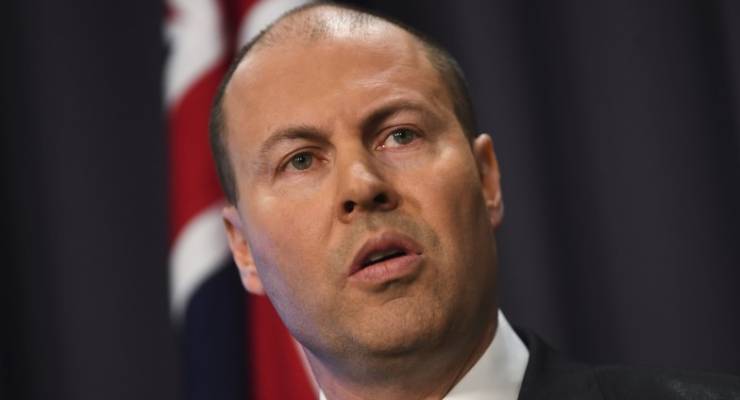
Yesterday’s national accounts for the September quarter are the most important pieces of economic data this year, and for all the wrong reasons.
Overall, the economy grew by just 0.3% in the September quarter, bringing annual growth down to 2.8% in seasonally adjusted terms. The 0.3% result was the weakest growth since the negative result of September 2016, hurt by weak business inventory growth, which was nearly flat in the quarter and hacked 0.3% off the GDP result, and a fall in household spending. What household expenditure there was was fuelled by another decrease in the savings rate, while government expenditure helped prop up growth, along with a net export contribution.
Several big issues lurk in the data.
One is wage stagnation. There are three major economic policy challenges that the Coalition is simply unable to deal with: climate change, and the separate but related issue of energy, and five years of dormant wages growth. It literally has no policy on any of these issues, beyond silly rhetoric and hope. The September quarter data show just how much wage stagnation is weighing down the economy: average compensation per employee grew by just 0.2% in the quarter, the lowest level since early 2017, and well down on the 0.5% growth workers “enjoyed” in the September 2017 quarter.
That’s why the limited growth in household spending came from lower savings rates, and working families have been cutting that for years now (and lower wages growth means more profits for big business — the profit share of income rose in the quarter to its highest level since 2012). Neither the government nor business has any idea what to do about this huge anchor on economic growth. Some retailers have the hide to complain about poor wages growth hurting sales, when retailers are the most vocal opponents of wage rises and the worst wage thieves in the country.
The second issue is, not merely has the Reserve Bank been right to keep rates low — despite the likes of Michael Stutchbury, Warwick McKibbin and Warren Hogan demanding punitive rate rises — but there’s now a real chance that the next interest rate movement will be down, not up. The RBA’s view of the economy appears to have been too rosy. Buried in yesterday’s data is a series of downward revisions from initially reported data in previous quarters: the June quarter annual growth rate was 3%, not the initially reported 3.4%. The reported March quarter growth rate of 3.1% was actually 2.9%. December’s 2.4% was 2.3%. And the 2.8% of the September quarter is a far cry from the RBA’s predicted 3.5% growth this year and 2019 — on which basis it was holding rates steady.
The AMP’s chief economist Shane Oliver has been more bearish on the RBA than most economists for a while, seeing a rate rise as not happening until 2020, and suggesting a cut was a possibility. He wrote yesterday “given the combination of falling house prices, tightening credit conditions and constrained growth which will keep wages growth weak and inflation below target we are changing our view on the RBA from being one of rates on hold out to second half of 2020 to now seeing the next move being a rate cut. However, with the RBA still seeing the next move as being up it will take them a while to change their thinking so we don’t see rates being cut until second half next year.”
And a third issue — one of perceptions. According to the ABS, government expenditure was crucial in fuelling growth in the quarter. A particular kind of spending: “National non-defence (2.0%) was the main contributor to growth, due to increases in social benefits to households from continued government spending on disability, health and aged care services.” The health and social assistance sector was a key source of growth in the September quarter.
But we also know from employment data that the sector — long Australia’s biggest employer — has been the biggest driver of our strong jobs growth over most of the last two years. And in turn that has meant that what little wages growth there has been in Australia has been mainly in the health and social assistance sector. In fact, health and social assistance has seen the strongest wages growth every quarter going back to March 2016, when it was a close second.
So at the moment we’re relying on health and social assistance — not just hospitals and doctors, but aged care, the burgeoning NDIS, and child care — for much of our impetus in economic growth, jobs growth and wages growth. It’s a very different economy that the one we see portrayed in the media and by politicians.









Crikey is committed to hosting lively discussions. Help us keep the conversation useful, interesting and welcoming. We aim to publish comments quickly in the interest of promoting robust conversation, but we’re a small team and we deploy filters to protect against legal risk. Occasionally your comment may be held up while we review, but we’re working as fast as we can to keep the conversation rolling.
The Crikey comment section is members-only content. Please subscribe to leave a comment.
The Crikey comment section is members-only content. Please login to leave a comment.